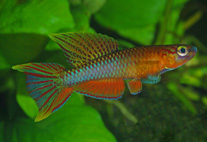Abstract
Amiracarus pliocennatus n. gen., n. sp. is described based on fossils found in Pliocene and Pleistocene clastic sediments in caves of the Slovenian Classical Karst (Kras). Diagnosis and relationships of the new genus are given and relationships within the extant species of the genus are discussed as well as variability and reliability of some characters, used for spe-cies differentiation. Amiracarus senensis (Bernini 1975) n. comb. is proposed as a type species of the new genus, and other four extant species are newly placed in Amiracarus n. gen.: A. abeloosi (Lions 1978) n. comb., A. discrepans (Mahunka 1966) n. comb., A. grootaerti (Wauthy &Ducarme 2011) n. comb. and A. similis (Subìas & Iturrondobeitia 1978) n. comb. Finding of a fossil individual of M. senensis Bernini 1975 in Ponicova Cave of South-West Carpathians in Romania is reported and a description of this individual is given. Relationships with the genus Miracarus Kunst 1959 are discussed and a new diagnosis of this genus is also given, along with the redescription of its type species, M. hurkai Kunst 1959.

